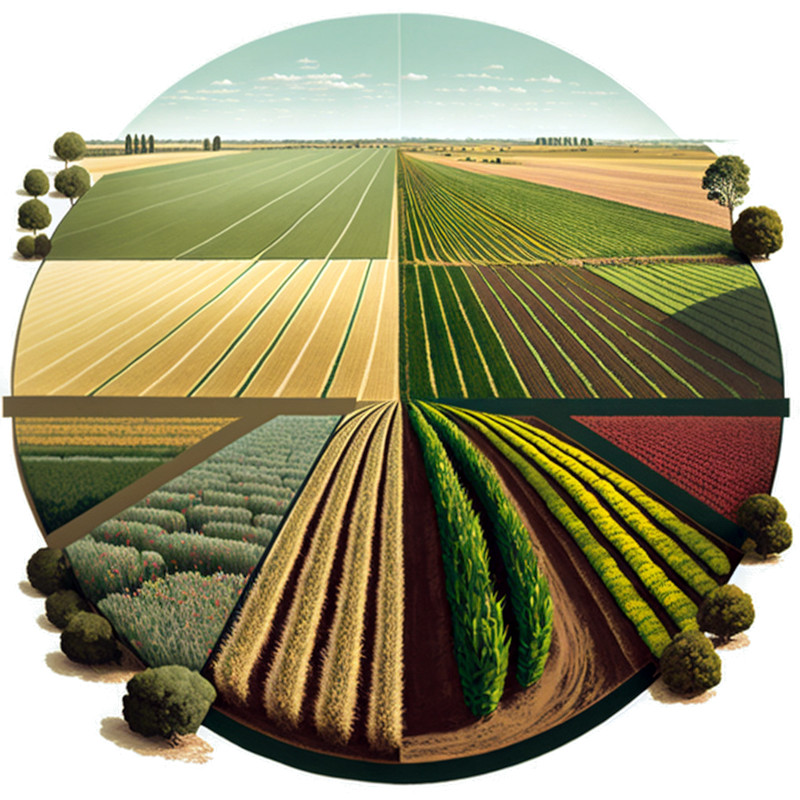01/25/2023
Correct crop rotation is one of the most important basic techniques in agriculture. It involves planning the cultivation of different types of plants on the same plot of land over several years. Mostly, the main aim of the practice is to enrich soil biodiversity and increase crop yields in a suitable rotation.

The most important advantages of growing crops in a suitable crop rotation are:
- Improved soil fertility: by growing certain crops, we increase the organic matter content of the soil and thus the ability to retain rainwater. In addition, a suitable crop rotation introduces various types of crop residues into the soil, thereby enriching the soil and creating the right conditions for the development of beneficial micro-organisms.
- Pest and disease prevention: Through proper crop rotation, we are able to avoid many pests and diseases that may be specific to a plant. By growing the same crop for many years, we attract many pests to the field each year and introduce infected crop residues into the soil. Through correct plant succession, fungi and pests from the previous crop do not pose a threat to the correct development of the current crop.
- Reducing the use of fertilisers and pesticides: With the right crop rotation, you can reduce the need for fertilisers and pesticides. This is related to the diverse root systems of crops that penetrate the soil in other soil layers. This means that some crops are able to take up nutrients from a depth not available to another crop. In addition, faba bean crops are able to fix nitrogen from the air into the soil, which reduces the need for nitrogen fertilisers.
Some practical tips
It is important to remember that crop rotation must be adapted to local conditions and the needs of the soil and climate. It is therefore important to plan the crop rotation carefully and adjust it if necessary. Normally, crop rotation is carried out according to the following principles:
- firstly, you need to determine the total number of fields in accordance with the crop structure,
- choose the right species for the soil complex,
- cultivate a root crop or other crop on manure in the first place,
- do not plan to grow winter crops after root crops,
- alternate between spring and winter cereals,
- plants with a long emergence period and initially slow growth are planted or sown after weed-reducing plants,
- the proportion of legumes should be 25-33%,
- cultivate legumes for a minimum of 1 year,
- due to the so-called soil fatigue, plant succession should be planned in such a way that on the same field individual plant species do not occur more often than; flax every 6-7 years, broad beans every 4-6 years, beet and rape every 4 years, potatoes, legumes and oats every 3 years, wheat and oats every 2 years,
- maintain at least a 4-year interval of cultivation of the same or related species in a given field, which limits the occurrence of specific diseases and pests to such an extent that they do not cause economic loss.
In conclusion, choosing the right crop rotation is a very important agricultural technique that can improve soil fertility, control pests and diseases and reduce the use of fertilisers and pesticides.
